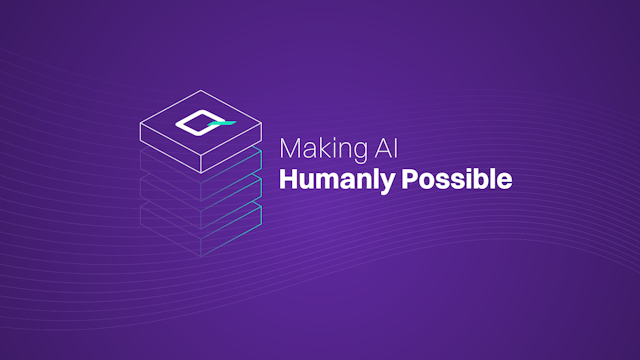Why You Need to Consolidate Your Tech Stack
Consolidating your tech stack simplifies data management, reduces costs, and ensures unified insights across multiple business use cases.
Architectures have rarely been simple. Alan Turing’s proposed Automatic Computing Engine and then the Von Neumann architecture’s separation of storage from compute set in motion distinct data management systems. On one hand, data warehouses and data lakes emerged distinctly, while on other, compute-centric ecosystems developed, like modeling, analytics and business intelligence (BI) tooling. These distinct yet intertwined ecosystems can often feel more “men are from Mars, women are from Venus”, than harmonious yin and yang.
Today, the cloud–through containerization, DevOps and modularized microservice architectures–is increasingly center stage, while Generative AI adds significant new tooling from stage right. The key outcomes include:
Cloud transformation, application modernization, and FinOps has brought cost impacts through what Andreessen Horowitz has defined as the Trillion Dollar Cloud Paradox. Cloud architectures drive agile tech offerings that deliver significant growth at first. Yet as growth falters, cloud costs spiral as the organization tries to keep up.
AI has brought bewildering quantities of fast-evolving tooling, with new GenAI innovations and products appearing weekly, often daily.
Many numbers and types of languages, tools and platforms are available, as evident in programming language and database league tables. With cloud-hosted microservices, polyglot design patterns have supplanted single language-entrenched monolith enterprise architectures.
Multiple combinations of tooling
The current technical stack includes Java, Kotlin, Scala, Rust, Flink, Kafka, Kinesis, Spark, Hadoop, Ignite, Kubernetes, Docker, Helm. That’s 13 languages and platforms. For decision intelligence workflows driving risk, compliance, fraud detection, customer intelligence, KYC and more, languages like Python and C++, relational SQL and noSQL databases, BI tools and spreadsheets also thrive. That means many combinations of tooling across connected data, analytics and AI pipeline components, such as:
Data management and preparation;
Data quality, ensuring that your data, when it centers on entities, people, places and organizations, is accurate, meaningful and contextual;
Data science, including models, analytics and scoring, increasingly incorporates knowledge graphs that contain more than just data, but your organization’s knowledge and intelligence;
Model training and historical batch processing driving research pipelines, and on-demand and streaming models, typically run in production;
Reporting, dashboarding and alerts;
New Generative AI stacks with grounded enterprise context, for example automating reading text, report summarization and content authoring.
While CIOs and CTOs love choice and modularity, they also say they need to manage burgeoning software and cloud costs, avoid unnecessary duplication of data stores, and make better use of existing stacks to create value.
How Quantexa consolidates your tech stack
Quantexa helps its customers simplify, consolidate and improve the modern technology stack through two principal vehicles:
Quantexa is purpose-built to deliver data without doubt working with, and across, your existing data assets. For IT leaders and architects, this brings simplicity and assurance to your analytics and data management architectures, increasing efficacy, reducing maintenance overheads, and enabling knowledge discovery.
When applied to multiple use cases, Quantexa scales efficiencies further by reusing common frameworks among data science and data engineering teams, consolidating your stack and simplifying IT governance and maintenance.
The benefits of a unifying platform is that data is delivered without doubt across an organization and into multiple use cases. In an accompanying blog, we explore how to share Quantexa components across use cases.
Why use a single platform for multiple use cases?
What if a single platform could underpin and consolidate key tasks from data gathering and management to analytics, and service multiple use cases? What, too, if that platform could guarantee the highest quality unified data, delivered with flexibility and traceability, to models, analytics and AI across multiple business units?
The Quantexa Decision Intelligence Platform helps users unify data and build a common, coordinated contextual fabric structure from which multiple business units can draw insights to drive informed decisions.
![]()
The Quantexa Platform enables you to navigate data without doubt through a single platform because, with accurate entity resolution, more reliable data can be forged from existing data to give confidence to value-enabling insights. This means that Analytics and Data Science teams can spend more time using data to create value than validating, troubleshooting and patching data. Data teams can also improve data quality in upstream data management platforms.
Additionally, by fusing existing data estates, Data teams need not host and maintain unnecessary and duplicative databases. This amplifies knowledge communication within and across teams. For example:
Data scientists can assess data telescopically through knowledge graphs to identify prospective money laundering networks in the transaction haystack.
Analysts and investigators can drive deep into ego graphs and scorecards to microscopically uncover laundering networks.
It can also flexibly service distinct requirements such as levels of entity quality thresholds, operational timescale requirements (batch and dynamic on-demand) and incorporate different model types and data volumes and histories.
This ultimately means Quantexa can flexibly underpin multi-department use, such as financial crime, customer intelligence, data management, and more.
Opportunities to deploy Quantexa to multiple use cases
This gives firms the opportunity to reduce their future maintenance overheads by sensibly coordinating their adoption of the Quantexa Platform while still facilitating the need of their individual use cases.
Quantexa, like most new software projects, will get tested and incorporated into one use case first, for example Retail AML or KYC. Once proven successful in delivering data without doubt driving business success it then can be extended into other use cases, perhaps customer intelligence, trade AML or credit and counterparty risk management.
By delivering data without doubt, Quantexa improves decision-making and performance and AI without doubt across impacted business teams while helping consolidate technology stacks. Furthermore, when deployed well across multiple use cases, Quantexa allows cost and governance savings from optimized component and infrastructure-sharing.



